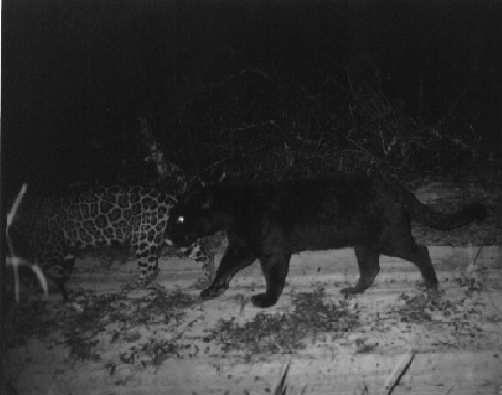Laury Cullen
Laury Cullen was awarded a Rufford Small Grant in 2000 and went on to become the Whitley Gold Award winner in 2002.

Laury Cullen: 2002 Whitley Gold Award
The Atlantic Forest of Brazil, which has been reduced to about 7% of its original size, is believed to harbour nearly 7% of the world's species, many of which are endemic and threatened with extinction.
Most of the remaining Atlantic Forest of the Interior is found in the Pontal do Paranapanema, a triangular area surrounded by rivers in the state of Sao Paolo. This includes a State Park of 36,000 ha, and many small forest fragments adding up to about 12,000 ha. Most of the land in this area is privately owned. Recently, government land reform has subdivided many large farms to settle over 3,000 impoverished families, and plans to settle 3,000 more. In many cases, the land given to the settlers is next to forest fragments.
The remaining forest fragments still support an outstanding diversity of species, including the highly endangered black lion tamarin, jaguar, ocelot, puma, tapir, white-lipped peccary and blue-and-yellow macaw. However the farming practices of rural communities are causing biodiversity loss, as forest edges are eroded by fires, cattle grazing, the spread of invasive plants, and the use of pesticides. Moreover the isolated forest patches are now too small to maintain their ecological integrity.
Laury Cullen has worked with IPE for twelve years, and is now its Research Coordinator. A Masters graduate of the Tropical Conservation and Development Programme, University of Florida, he passionately believes that the best way to protect species in nature is to approach the task at landscape level. Such an approach combines scientific study, biodiversity management, and human activities.
To conserve this ecosystem, Laury has determined that there needs to be a halt to deforestation, the impact of human activity on the forest edge must be reduced and there must be genetic exchange between fragments to ensure the survival of endemic species. These outcomes can only be achieved by working with the local communities - in this case, mainly the new settlers.
Laury has forged a strong alliance with the Sem Terra movement, and its local Director has developed a great enthusiasm for jaguar conservation, often assisting Laury in the field. Settlers are learning to recognize the dignity afforded by panning for the long term stewardship of their new lands, and have responded enthusiastically to the point where Laury is now working with them as they plant endemic and economically useful trees across their properties.
First, buffer zones consisting of agroforestry parcels are helping to ease conflicts and reduce edge erosion, since primary forest is now surrounded by forested systems instead of completely open pasture or cropland. The edge effect inside the forest is, therefore, much reduced. Second, stepping-stones - small patches of trees, especially certain flowering and fruit bearing species - that increase connectivity among forest fragments - contribute to the genetic flux of many species by promoting animal and plant dispersal. Building buffer zones and stepping stones which are financially useful to the community is helping to save the forest itself.